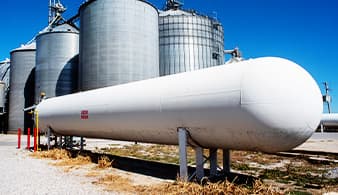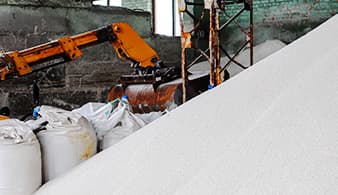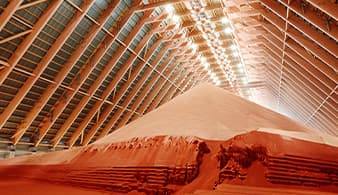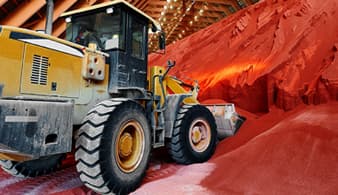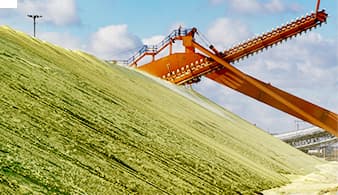
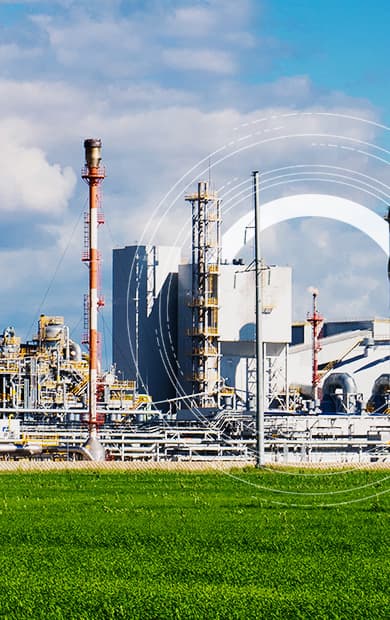
Fertilizers
Overview
The fertilizer industry has seen dramatic changes in market dynamics, with challenges posed by policy and regulatory changes, political instability, conflicts and new macroeconomic realities. The drive towards energy transition and ambitious zero-carbon goals has also opened up the industry to new entrants and new opportunities.
It is more vital than ever for market participants to have the full picture – to capitalise on the opportunities and manage the risk of the challenges.
Argus’ fertilizer market intelligence will empower you to work smarter:
- Our price reporting services provide robust daily and weekly price assessments, market moving news, actionable market commentary and proprietary data
- Our short-term outlook and medium to long-term analytics services connect you with industry-leading forecasts and analysis of prices, supply, demand, costs, trade and projects
- Our consulting services partner with you to deliver fully bespoke consulting solutions, including market-specific research and analysis
Our market coverage
Argus is the leading independent provider of market intelligence to the global fertilizer market.
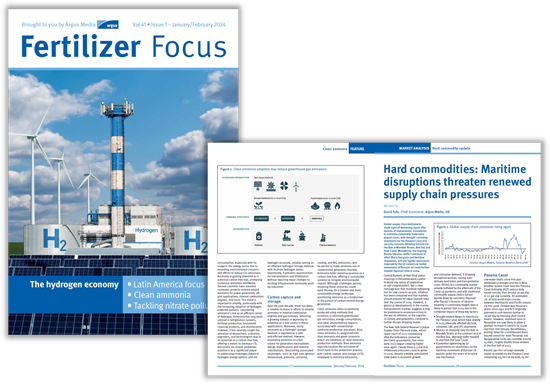
Fertilizer Focus Magazine – sign up here
Get complimentary access to Argus Fertilizer Focus, our bi-monthly magazine focused on traditional fertilizer commodities and specialty fertilizers. Each issue delivers a great blend of news, features, interviews and unique insights into all aspects of the fertilizer industry.
Sign up hereLatest fertilizer news
Browse the latest market moving news on the global fertilizer industry.
US amsul stripping margin rises again in April
US amsul stripping margin rises again in April
Houston, 19 April (Argus) — The stripping margin for ammonium sulfate (amsul), driven by higher amsul prices, continued to rise in April even as variable costs grew. The stripping margin increased by nearly $24/st to $270/st for April, up by 10pc from March and up by 13pc from April 2023. Inland amsul trade exceeded $400/short tons (st) this month on continued supply tightness following production outages in the first quarter. Minimal length at New Orleans (Nola) spurred sellers to offer imported tons as high as $405/st fob for first half May delivery. Participants in the amsul market anticipate values to keep rising into May as supply tightness persists. Higher amsul prices have been partially caused by higher costs for inputs. The Tampa, Florida, ammonia contract rose by 7pc to $475/st in April from the month prior and the sulfur Tampa contract climbed by 17pc to $81 per long ton (lt) from the previous quarter. The cost of ammonia and sulfur were 8pc and 27pc lower than a year earlier, respectively. The total variable cost for amsul rose by $10/st in April to $143/st after holding steady in March. Rising ammonia prices have supported amsul variable costs but gains in the price of ammonia have not been as substantive as the market expected, sources said. Applications of ammonia in the US are slowing, which may weaken the price of the Tampa contract, but production outages could offset seasonal declines. Ma'aden's ammonia II plant is due to undergo a month of maintenance starting mid-April. Sulfur prices are expected to remain firm in the near term but lose momentum entering the third quarter on higher refinery utilization in the US and the return of Chinese exports of MAP and DAP, which could oversaturate the phosphate fertilizer market. Sulfuric acid is used to produce DAP and MAP. By Meghan Yoyotte Send comments and request more information at feedback@argusmedia.com Copyright © 2024. Argus Media group . All rights reserved.
Phosphates: Indian DAP stocks build in March
Phosphates: Indian DAP stocks build in March
London, 19 April (Argus) — DAP stocks rose by the equivalent of 2-3 import cargoes in March, or nearly 86,000t, as imports and local production outstripped offtake. Indian DAP production reached 218,900t in March, according to FAI data, down nearly 41pc on the same month in 2023. DAP imports reached 201,000t in March, down nearly 54pc on March 2023. Sales of DAP reached 334,200t, down nearly 12pc year on year. Stock draw/build, defined as production plus imports minus offtake, was plus 85,700t. This implies that stocks are still close to 2mn t of DAP, as estimated by the Indian government. Full fertilizer year DAP production (April 2023-March 2024) reached 4.29mn t, down around 1pc year on year. Imports were down 15.4pc at 5.57mn t, mainly due to the loss of supply from China owing to customs inspections, with sales at 10.8mn t, up nearly 4pc year on year. By Mike Nash Send comments and request more information at feedback@argusmedia.com Copyright © 2024. Argus Media group . All rights reserved.
EPS to register six ammonia-powered newbuilds with SRS
EPS to register six ammonia-powered newbuilds with SRS
London, 17 April (Argus) — Shipping firm Eastern Pacific Shipping (EPS) will register six dual-fuel ammonia powered vessels, due to be delivered from 2026, with the Singapore Registry of Ships (SRS). The commitment is part of an initial agreement with Singapore's Maritime and Port Authority (MPA), vessel classification organisation American Bureau of Shipping (ABS) and Lloyd's Register. EPS said the collaboration with the MPA will extend to supporting crew and seafarer training on the vessels powered by "zero and near-zero emission fuels", in addition to pilot trials of these fuels, and building on the capacity and infrastructure required for ammonia bunkering. Argus assessed the price of green ammonia dob east Asia on a very-low sulphur fuel oil energy density equivalent (VLSFOe) at $2,608.90/t in March, a premium of over $1,975.08/t against VLSFO dob Singapore. Grey ammonia in east Asia was assessed at an average of $829.52/t VLSFOe across March, a premium of $195.70/t to VLSFO dob Singapore. By Hussein Al-Khalisy Send comments and request more information at feedback@argusmedia.com Copyright © 2024. Argus Media group . All rights reserved.
Australia provides $256mn to high-purity alumina plant
Australia provides $256mn to high-purity alumina plant
Sydney, 17 April (Argus) — Australia's federal Labor government will offer A$400mn ($256mn) in loans to a high-purity alumina (HPA) processing facility, as part of its recently announced Future Made in Australia policy. Canberra has granted Australian developer Alpha HPA the funds via two separate agencies. The Northern Australian Infrastructure Facility and Export Finance Australia's (EFA) A$4bn critical minerals facility will each offer A$160mn and the two agencies will jointly fund a further A$80mn cost overrun facility, with drawdown on the grants contingent on Alpha HPA securing letters of intent for 10,000 t/yr in output. The announcement comes after the Queensland government provided A$21.7mn for the second stage of the facility at the industrial city of Gladstone in Queensland state. Australia's other HPA producer is Cadoux, formerly FYI Resources , is planning a 10,000 t/yr operation in Western Australia (WA) state's Kwinana industrial zone. The firm received an A$3mn grant from the WA government in November for an initial small-scale production plant. Graphite grant Canberra also brought forward an A$185mn EFA loan to Australian emerging graphite producer Renascor for stage 1 of its proposed vertically integrated battery anode material manufacturing project. A downstream graphite concentrator plant is planned for South Australia state with feedstock from the Siviour deposit, the largest outside Africa, Renascor said on 17 April. The original loan was approved in 2022, and Canberra said the concentrator project will now be realised sooner. Stage 2 will produce Australian-made purified spherical graphite for use in lithium-ion batteries required for electric vehicles and renewable technologies, Canberra said. Renascor is progressing advanced engineering designs for the mineral processing plant and non-process infrastructure while discussing binding offtake terms with existing partners, as well as with other battery-anode market participants. By Tom Major Send comments and request more information at feedback@argusmedia.com Copyright © 2024. Argus Media group . All rights reserved.
Spotlight content
Browse the latest thought leadership produced by our global team of experts.
No Results Found
No Results Found
Explore our fertilizer products
Argus Ammonia Analytics
Medium to long-term analysis and outlook for clean and conventional ammonia, covering prices, supply, demand, costs, trade and projects.
ProductsArgus Nitrogen
Daily and weekly price assessments, trade trends, market commentary, key current and historical data.
ProductsArgus Urea Analytics
Medium to long-term analysis and outlook for the urea market, covering prices, supply, demand, costs, trade and projects.
ProductsArgus Sulphur
Daily and weekly price assessments, trade trends, market commentary, key current and historical data.
Key price assessments
Argus prices are recognised by the market as trusted and reliable indicators of the real market value. Explore some of our most widely used and relevant price assessments.
Related events
Argus Fertilizer Caspian, Black Sea and Eastern European Markets
Argus Fertilizer Caspian, Black Sea and Eastern European Markets
Argus Fertilizer Europe Conference
Argus Fertilizer Europe Conference
Argus DEF Forum North America
Argus DEF Forum North America


